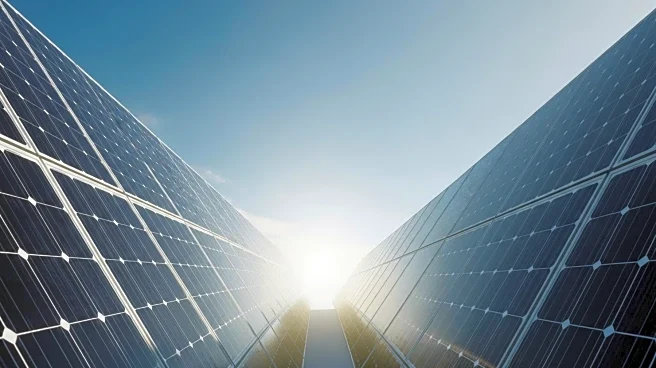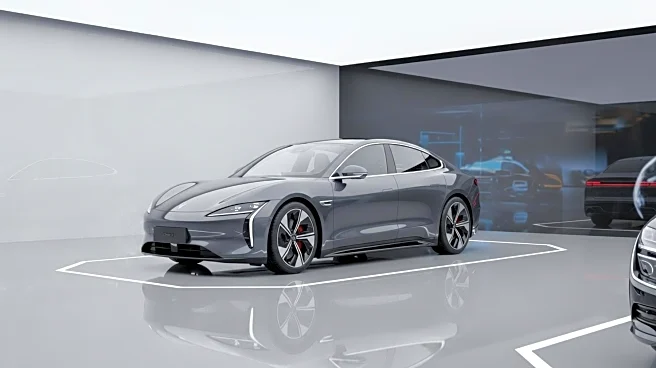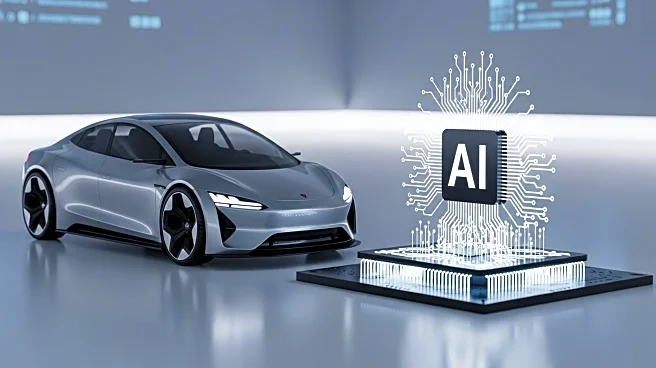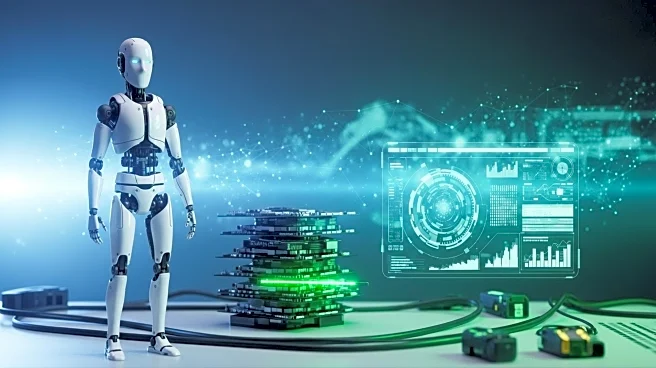What's Happening?
Tesla has significantly expanded its charging network, making it accessible to non-Tesla electric vehicles (E.V.s). This development is part of a broader trend where major E.V. infrastructure companies, including ChargePoint, EVgo, Electrify America, EV Connect, and Blink, have collectively built over two-thirds of the country's fast-charging stations. Tesla alone accounts for about a fifth of these stations, with its large stations comprising more than half of all charging ports. The expansion of fast-charging stations has transformed long E.V. road trips from challenging endeavors into feasible journeys. Routes that once required careful planning now have abundant fast chargers, with most major highways lined with these stations. The number of fast-charging stations in the U.S. has increased from around 1,000 a decade ago to 12,000 today, according to federal government data.
Why It's Important?
The expansion of Tesla's charging network and its accessibility to non-Tesla vehicles is a significant step in reducing 'range anxiety' among potential E.V. buyers. This anxiety, stemming from fears of not reaching the next charger, has been a major concern for consumers. The increased availability of fast chargers is crucial for long-distance travel, making E.V.s more practical for road trips and daily commutes. This development supports the growth of the E.V. market, encouraging more consumers to switch from traditional gasoline vehicles to electric ones. It also aligns with broader environmental goals by promoting cleaner transportation options. The expansion of charging infrastructure is essential for achieving the U.S.'s targets for reducing carbon emissions and transitioning to sustainable energy sources.
What's Next?
The continued expansion of the charging network is expected to accelerate, with significant private investment pouring into the sector. Major car manufacturers have committed to building thousands of new charging ports across the country. Retailers and gas stations are also joining the effort, with companies like Walmart planning to install thousands of fast chargers at their locations. The National Renewable Energy Laboratory estimates that the U.S. will need approximately 180,000 fast-charging ports by 2030. If the current pace of expansion continues, this target could be reached in the early 2030s, potentially sooner if the rate of growth accelerates further.
Beyond the Headlines
The expansion of the E.V. charging network has broader implications for the U.S. economy and energy policy. It represents a shift towards more sustainable infrastructure and highlights the increasing role of private investment in achieving public policy goals. The standardization of charging ports, driven by federal funding and private initiatives, is crucial for ensuring compatibility across different E.V. models, further easing consumer concerns. This development also reflects a growing collaboration between various stakeholders, including car manufacturers, energy companies, and retailers, in building a comprehensive and accessible charging network.










